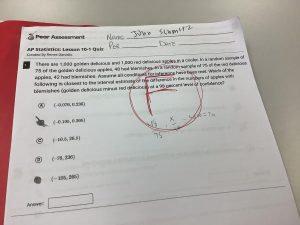Prolonged Absence Due to Flu Affects Student Grades
December 13, 2022
Influenza, or the flu, is a disease that has been present for at least 1,500 years, dating back to 5th century BCE. It is an infection of the respiratory system that typically targets the nose, throat, and lungs. This can be spread when infected people cough, sneeze, or talk, sending droplets into the air and potentially to nearby persons. Over decades, schools have been affected by this disease and many students have been rendered absent for long periods of time. Due to this absenteeism, students have noticed a change in their grades relating to their time out of school.
A study conducted by Attendance Works, a site based on educating parents and students about the problems of chronic absenteeism, states that “missing 10 percent of the school; or about 18 days in most school districts, negatively affect a student’s academic performance.”
Students infected by the flu are expected to remain at home for 24 hours after their symptoms subside, and in some of those infected, symptoms do not decrease until weeks later.
In the past, across the country, influenza has been the main cause of absences and has resulted in around 40% of absences. School districts in New Jersey have reported drops in grades for years, especially in more populated areas such as Newark and Trenton.
Within New Providence, a flu outbreak occurred last year, and the difference was astounding.
One student who was not affected by the flu, Timea Juhasz, recalls that “it felt so weird. My classes were practically empty and teachers were struggling on what material to work on when almost all of the students weren’t there”.
A student that was affected by the flu, Fenia Preka, stated that, “it didn’t feel too different at first. The only thing I really noticed was that there was more work. I was absent for only maybe a week and a half, but by the time I returned, I had piles of incomplete work and I noticed my grades slipping”.
Many students reported similar experiences and all felt that their grades had dropped around the time that they were absent. Many of the students were high achieving and typically had As and Bs, but after being out they noted that their grades had dropped to Cs and Ds.
“It was difficult to teach myself the material while at home and without the guidance of my teachers,” Dezerre Perez said after being absent for a week after testing positive for the flu.
Influenza remains the one of the primary drivers for school absenteeism and continues to affect students around the world, including their grades. Many students felt their grades slipping although attempting to stay on top of their work, and many found it difficult to teach themselves the material without the help of their teachers.

















